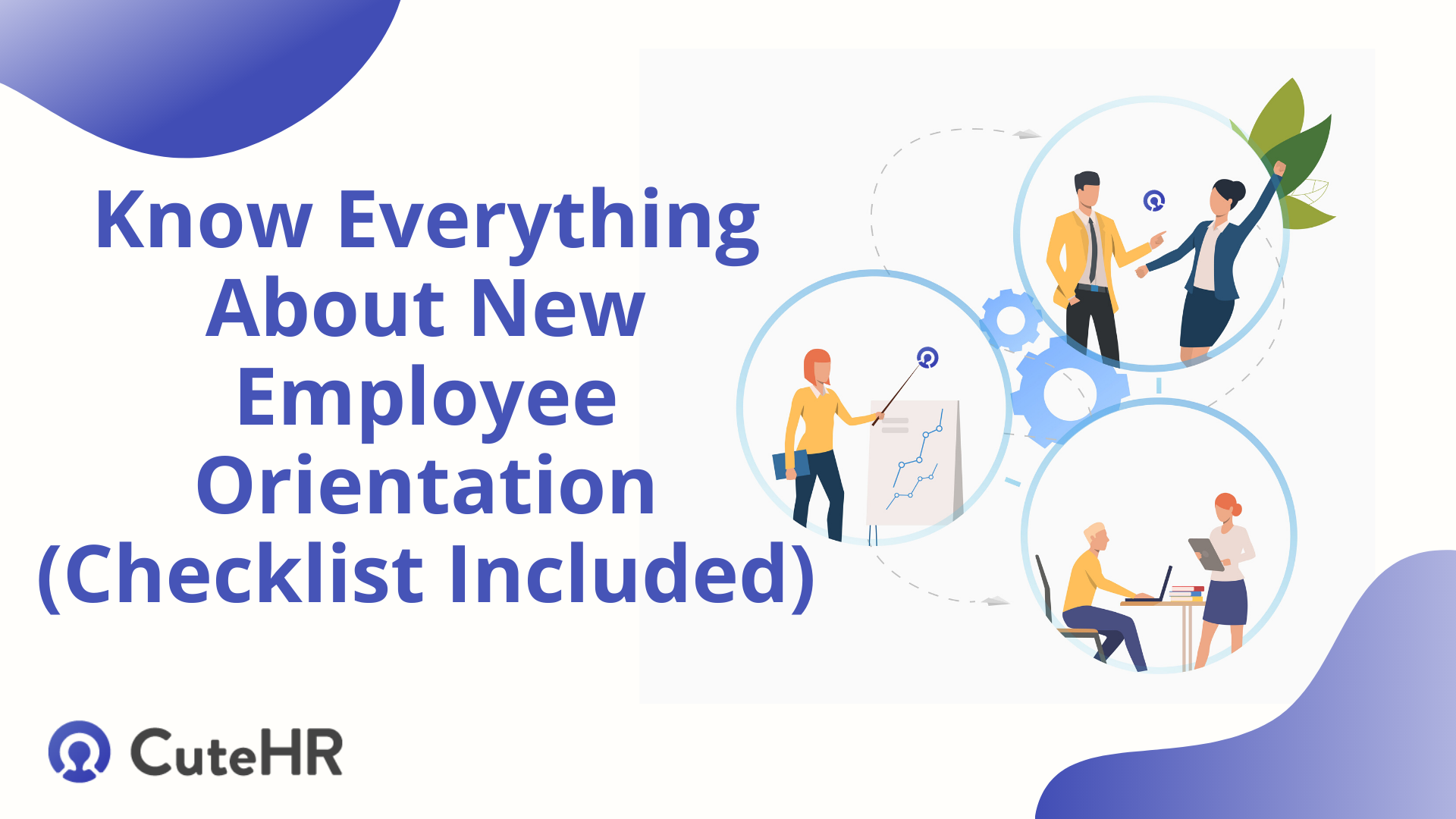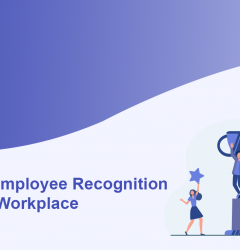06 Jun

Every organization has to positively execute the orientation process. The new employee orientation program entails all those activities that acquaint a fresh recruit to the workplace. A company hires plenty of new people and sometimes there is bulk-hiring as well. An essential responsibility of the company towards these new employees is orientation. Orientation is also popularly known as induction.
The orientation programs were initiated as a practice in the U.S. in the early 1970s.
Fundamentally, it is the orientation process that decides how welcomed the new employees feel at the workplace. Besides this, orientation and onboarding are associated with success maximization.
The importance of orientation cannot be stressed enough. So much so that it is used in conjunction with Human Resource Management best practices.
The benefits of successful orientation are many but primarily the learning curve drastically improves, there is improved communication and consequently, there is more productivity.
A poll by the TJinsite (the research and knowledge branch of TimesJob.com) brings forth that somewhere around
40% of the employees believed new employee orientation programs act as a powerful medium to effectively convey job expectations and good work ethics.
Orientation gets the dice rolling so that the new employees feel prepped and welcomed – consequently they can contribute to the organization much faster. After recruiting, this paramount responsibility of new employee orientation falls with the HR department too. There are several steps involved in the orientation process. Moreover, it is a recurring one. Hence, the HR department of organizations must formulate a new employee orientation checklist. This can prove to be a great aid most definitely.
Table of Contents
What is the new employee orientation?
Orientation is the process by which new employees are trained and introduced to the workplace. It is not just a formal mandatory process but one that is important enough to solidify the employee’s relationship with the organisation and make it more concrete. Orientation has several techniques for it. Each organisation makes use of various orientation methods to get the new recruits on board.
Michael Watkins, author of The First 90 Days opines that
“Employee orientation centres around and exists to help the individual employee, but it is the company that ultimately reaps the benefits of this practice.”
The idea is to make the new employees feel welcomed and show that a rock-solid foundation can be built from the start.
It would be useless to go with the conventional way of showing videos, lecturing or filling out dull paperwork.
In today’s time’s new employee orientation must aim at creating a positive first impression.
As per research, it has been proven that employee retention rate can be improved by 25 percent. Such is the impact of positively introducing those new hired to the workplace, culture, responsibilities, facility and co-workers.
Employee orientation bricks the relationship between the company and the employee.
Purpose of Orientation
Orientation should not be reduced to a mandatory process that the HR unit has to execute. It cannot simply be considered as a nice gesture either. In fact, it has deep implications on the employee retention rate, acts as a productivity booster and most certainly conveys the ethics and culture of your organization.
The scope of orientation can be understood from the following
- Facilities to mitigate feelings of nervousness, anxiety and confusion that all new hires face.
- Communicates the belief system, ethical and cultural practices of the workplace.
- Acts as a medium to present the company goals and expectations.
- Familiarizing all new recruits to their specific job responsibilities and their position in the organization.
- Reduces employee turnover rate.
As a whole, new employee orientation is a positive measure that all companies and organizations most certainly make use of. However, an effort must be made to make this process as open, interactive and less mechanical as possible. The idea is to inculcate practical job expectations, optimistic attitudes and job satisfaction.
Director of Human Resources at engage: BDR, Sarah Wetzel puts across that,
“I truly believe that onboarding is an art. Each new employee brings with them the potential to achieve and succeed. To lose the energy of a new hire through poor onboarding is an opportunity lost.”
Not only orientation but onboarding too go hand in hand to achieve the same. A splendid first impression will commence cordial and healthy work relationships and attitudes. Adding to this, a flawless and successful new employee orientation program can influence absenteeism and turnover rate.
Onboarding vs Orientation
As common both these activities are to the Human Resource Department, more than often they are considered synonymous to each other. Albeit there lies a difference between onboarding and orientation.
Orientation is a one-day event that typically lasts for a couple of hours. While onboarding is an ongoing process. The agenda for orientation provides all company details, job responsibilities and introduction to coworkers and the facility around. While onboarding is specifically curating and developing the new employee as the job and company require.
The orientation process is better if interactive, short and thorough. The onboarding process is considered longer better.
An overview of the company, the benefits, safety, policies and procedures are introduced in the former. In the latter, the introduction pertains to departments, teams, projects and check-ins. New employee orientation is all about supplementation with tools and information to amplify and improve job functions.
Statistical reports by an onboarding software company, Click Boarding show that
The chances of new recruits who get to experience a structured onboarding process, increase by 58%.
Onboarding entails assimilation. Assimilation incorporates making use of techniques and methods that develops company culture and commitment in new recruits. Basically, orientation is a part of the onboarding process.
Importance of New Employee Orientation
Every new employee can encounter and foster a feeling of anxiousness, bewilderment, nervousness and anxiety in the first few days. It is the job of the human resource department to erect a proper orientation program that would convey a feeling of belongingness and warmth.
Orientation aims to assemble mental and emotional integrated employees in the workforce. This works by coordinating the required tools and support.
Research has found that the orientation program of 38% of the companies last only for a week, whereas the socialization process takes up an entire year.
Hence, it would be wise to not rush the process.
It is although of significant importance that all human resource department personnel and the CHROs take the necessary steps to contribute to the employee orientation program.
For this, it is obligatory to prepare a new employee orientation checklist.
This checklist will serve as a guide in preparing and putting up an efficient orientation program.
However, there are some common turn offs that instantly can negatively impact an orientation program. It’s best to avoid the following practices –
- Bombarding the new recruits with excessive details including numbers, facts, figures and names.
- Full-length lectures.
- Presenting videos in a boring format
- Handing out employee handbook and tons of paperwork.
- Unplanned orientation programs.
- Excessive paperwork
Based on a company’s or organisation’s preference, the employee orientation program can be conducted by selecting a set strategic path.
These strategic moves help to design an orientation program. The firms get to choose from the following six types –
- Formal or Informal – In an informal type of orientation program, a new recruit is expected to get accustomed to the job and the work culture. Right away they are put on the job and are asked to report to the HR department. An informal orientation lasts maximum up to an hour or less.
On the contrary, a formal orientation is one where the new recruits get to familiarize with the company through a proper orientation program.
The formal orientation program is divided into 3 key stages. Firstly, the introduction begins with the HR department. Here, general information regarding the company is provided. In the second stage, the new hire is given a specific orientation to the assigned department and the job. Mainly this task is executed by the supervisors. The final stage of formal orientation comprises of follow up meetings to further clarify any doubts. It’s mainly after a week or so that the follow-up meetings are conducted with the supervisor. It is either the HR specialists or supervisors that conduct the formal type of orientation. It lasts up to weeks if not months.
Of course, the formal orientation program proves much beneficial for both the company and the new hires. To be introduced formally is necessary to inculcate a feeling of belongingness.
- Collective or Individual – Another decision to be made in terms of orientation is whether to go with a collective or an individual approach. It is clearly the management’s choice to induct the new hires in groups or individually. In the latter, the individual differences can be catered to. But it is considered as an expensive and time-consuming task.
Opposite to this is the group orientation where new hires are inducted in groups. It is a practice most commonly seen in large firms. But the specific attention that can be given to each employee, lacks in-group orientation.
- Serial or Disjunctive: The final type of orientation type is serial or disjunctive.
When a new hire is shown around and inducted with the help of an experienced employee, the type of orientation program is serial. Here, the experienced employee takes on the role of a mentor, buddy, tutor or model for the new recruit. Through this kind of orientation, the traditions and customs of the company get passed on easily. The serial orientation program solely depends on the outlook that the mentor or buddy houses towards the company or the organization. Someone with a negative outlook can take the orientation south.
Contrary to this is the disjunctive orientation. Here, no predecessors are appointed to a new recruit. In disjunctive orientation, the new hire is not burdened with traditions but in fact, in a convenient manner is allowed to hone his creative and inventive skills.
Apart from the above basic types of the orientation program, another aspect to be kept in mind is the length of the orientation. There can be brief, lengthy, informal and formal orientation programs. It is totally the management’s call to decide on the type of orientation program.
With technological intervention, there has been a great contribution to the orientation process. With a ton of documents and paperwork involved, orientation can become a bit monotonous. The orientation process has seen tremendous improvement. This has been possible with a Learning Management System (LMS). This system allows the new recruits to skip the manual paperwork by signing in and submitting everything on the learning management system (LMS).
In the presence of a large number of new recruits, this LMS comes in handy by simplifying the entire process. Faster learning is encouraged with the inclusion of interesting segments like games and quizzes. Such features turn out to become efficiently utilized.
To avoid the shortcomings that hamper a good orientation program, an HR department can curate a new employee orientation checklist. This will manage and successfully effectuate the orientation program.
New Employee Orientation Checklist
A checklist will be able to streamline the new hire orientation process flow.
To carry out the orientation procedure in a smoother manner, this checklist containing all necessary activities will prove utterly valuable. The formalized orientation process checklist will prepare and list out all the required tools, adequate enough for a formal introduction.
It becomes very doable to track employee progress and management through this checklist. This way every little step of the new employee orientation process is reminded of.
A checklist can be curated and customize as per requirement. However, there are some very basic details listed down below that ought to be included.
Creating a New Employee Orientation Checklist
It is advisable to adhere to these basic items in your orientation checklist –
Introduction
An induction part in the checklist primarily must consist of all the vital introductions that make up an organization. Here an introduction to the company will encompass –
- Company overview
- Company culture and ethics
- The Company goals and mission
- Company charts, literature and videos
- Company handbook and welcome memo
Administrative or Paperwork
A crucial part of induction is the paperwork. It is of principal importance and is of urgent requirement. It is the job of the HR department to look into the paperwork thoroughly and necessarily include the following –
- Tax forms and W-4
- I-9 form
- Acknowledgement and consent forms of the employee
- Acknowledgement of company policies like sexual harassment policies, maternity leave policies, non-disclosure agreements, non-compete agreements, confidentiality agreement etc.
- Signed offer letter
- Complete employee data sheet containing all essential information about the employee.
- Direct deposit form
It is a good HR practice to get the paperwork filled in the first few days of the orientation process. This way, the most important yet dull task can be completed.
Important information on how to go about company entrances and exits, the provision of office tokens (if any), the office departments that accept leave applications, the arrangement of badges, business cards and formation of online avatars are minor but tasks of significant importance.
Company Tour
Along with a mentor or HR personnel, the newly hired staff most definitely should be given a tour. The aim of this tour must be to acquaint and familiarize the new hires to the facility and departments.
To show around the important offices and corners in a company includes an introduction to –
- All work stations
- Various departments and teams
- Board rooms and demonstrate how to book them.
- Common areas like bathrooms, kitchen, dining area.
- Offices of superiors to reach out when in need of any assistance.
Company Policies
All new hires must be introduced to company policies laid down below –
- Vacation and leave guidelines
- Absenteeism
- Work from home
- Data Security policies
- Insurance policies
Setting up the Workstation
Setting up a new recruit’s workstation must include –
- The Setting up the telephone and providing all the necessary office phone numbers.
- Setting up the computer, fax machine, printer and other tools with the help of IT personnel.
- Provision of ID passwords and introduction to office chat boxes, intranet, company website, applications, drives and software.
- Provide all stationery items and show where to get a restock.
The new employee orientation checklist, seen above roughly covers all the aspects that must be kept in mind when inducting new staff. However, each organisation or company must customise and edit it to cater to their requirements. It becomes the responsibility of the HR department to curate and goes through everything mentioned in the checklist.
Conclusion
Orientation as a process must be taken forward at a steady pace. The vision should be to make the new hires feel welcomed, less anxious and reduce the feeling of being overwhelmed. Here, sharing the responsibility by assigning a buddy or mentors can help. Nowadays, it has become the most common human resource management practice. By introducing the new employee orientation checklist, the induction process can be routinely carried forward. As well as the new employee orientation can be turned into a fruitful and rewarding task.













Avneet Oberoi